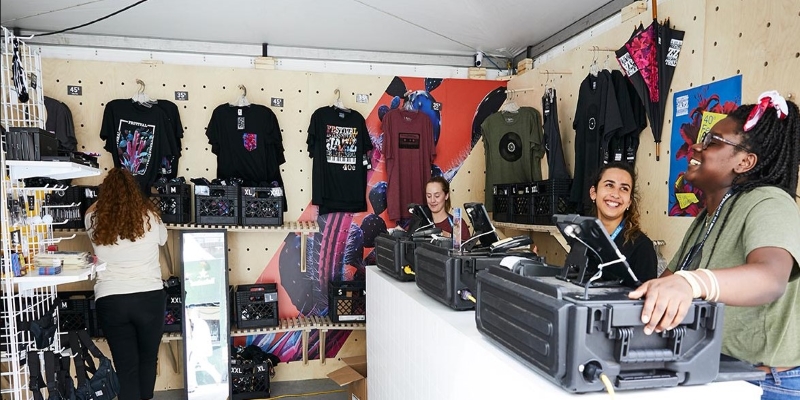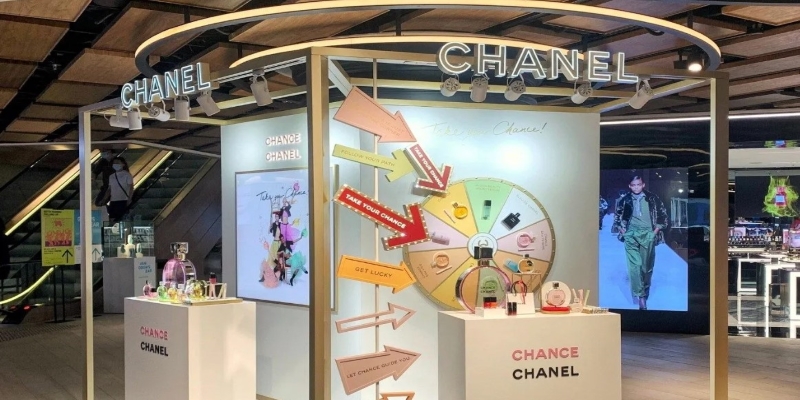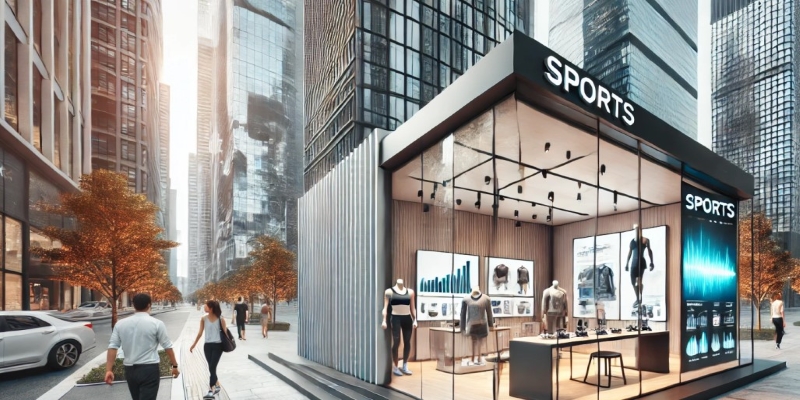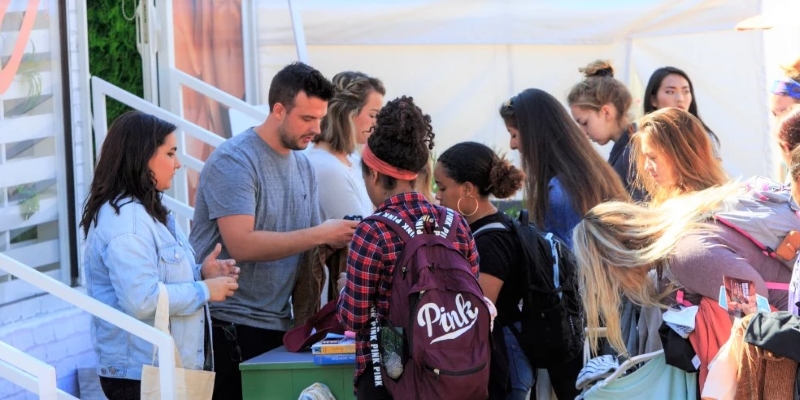The Growing Popularity Of Pop-Up Shops In Retail
In recent years, the retail industry has seen a rise in the use of pop-up shops, a retail trend that's reshaping how brands interact with customers. These temporary retail spaces have gained traction, attracting both small businesses and large corporations, and they offer a fresh alternative to traditional brick-and-mortar stores. Pop-up shops are growing in popularity because they provide a dynamic and flexible way to engage with consumers while building buzz around products.
In recent years, the retail industry has seen a rise in the use of pop-up shops, a retail trend that's reshaping how brands interact with customers. These temporary retail spaces have gained traction, attracting both small businesses and large corporations, and they offer a fresh alternative to traditional brick-and-mortar stores. Pop-up shops are growing in popularity because they provide a dynamic and flexible way to engage with consumers while building buzz around products. But why are they becoming such a prominent part of retail strategy in 2024? Let's dive into the reasons behind the trend and explore how businesses are using pop-up shops to their advantage.
A New Way To Engage Customers
Pop-up shops offer retailers a unique opportunity to connect with customers more intimately and experientially. Unlike permanent stores, which often rely on established locations and routine shopping habits, pop-up shops create a sense of urgency and exclusivity. Their limited-time nature generates excitement and curiosity, drawing in crowds who don’t want to miss out on the experience. For consumers, visiting a pop-up shop feels like an event, which makes the shopping experience more memorable.

This connection is especially important in today’s market, where consumers increasingly seek experiences over material goods. Pop-up shops tap into this desire by providing an immersive environment where customers can not only purchase products but also engage with a brand on a deeper level. Whether it’s through interactive displays, live demonstrations, or one-on-one conversations with staff, pop-up shops are designed to be more than just retail spaces—they’re experiences that draw people in.
Flexibility And Cost-Effectiveness
One key reason pop-up shops are becoming more popular is their flexibility. Brands can set up temporary locations in high-traffic areas, such as shopping centers, outdoor markets, or even festivals, without the long-term commitment of a permanent lease. This flexibility allows businesses to experiment with different locations, test new products, or even cater to seasonal demand. For smaller businesses or startups, pop-up shops are an affordable way to break into the retail space without the high costs associated with setting up a permanent store.

The cost-effectiveness of pop-up shops also makes them an attractive option for companies looking to cut down on overheads. Since pop-up shops are temporary, businesses can avoid the high costs of rent, utilities, and long-term staffing commitments. This is particularly appealing for small brands that want to generate buzz or build brand awareness but don’t have the resources for a permanent location.
Moreover, the lower upfront costs make pop-up shops a viable option for businesses that are still testing their product-market fit. They can create a pop-up shop in a target market, see how the product resonates with consumers, and adjust their offerings accordingly, all while minimizing financial risk.
Building Brand Awareness And Exclusivity
Pop-up shops are also powerful tools for generating buzz and building brand awareness. By creating a sense of urgency—whether through limited-time sales, exclusive merchandise, or collaborations with other brands—pop-ups encourage consumers to act quickly. This sense of exclusivity makes the experience feel special and attracts a dedicated customer base that values access to unique or hard-to-find products.

For larger brands, pop-up shops can also serve as a way to connect with younger, trend-conscious consumers who might not typically shop at their permanent locations. Pop-ups allow companies to align themselves with new trends or subcultures, giving them an edge over competitors who stick with more traditional retail models. A pop-up shop can become a cultural event, turning a brand into a part of the local community for a limited time.
This exclusivity is not only beneficial for consumer excitement but also for social media exposure. Pop-up shops often go viral because of the one-off nature of the event, encouraging customers to share their experiences online. When a store is only available for a short time, it creates FOMO (fear of missing out), which is a powerful marketing tool in today’s social media-driven world. Brands can leverage these moments to generate organic marketing content, attracting even more people to the shop.
Data Collection And Customer Insights
Another advantage of pop-up shops is the valuable data they can provide. By opening temporary locations, businesses can gain insights into consumer behavior, product preferences, and shopping habits in a more direct and personal way than they might from online interactions. Retailers can track foot traffic, monitor sales trends, and gather feedback from customers, which helps improve their overall strategy.
For example, if a pop-up shop features a new product line, brands can use the event to test how well the product performs in a physical setting, as opposed to an online-only launch. They can also track how different customer segments interact with the product and what kinds of marketing messages resonate most with their audience. The immediate feedback loop can be harder to capture through digital channels alone.
In this way, pop-up shops act as a testing ground for new ideas, allowing businesses to pivot or adjust their offerings based on real-time consumer reactions. This direct interaction with customers helps build stronger relationships and gives businesses the confidence to make decisions about expanding their offerings or pursuing new market opportunities.
Shaping The Future Of Retail
The rise of e-commerce and online shopping has reshaped the retail landscape over the past decade, but it’s not the end of physical stores. Instead, pop-up shops represent a shift in how physical retail is approached. In 2024, consumers still value in-person experiences, but they want something more than just a traditional retail store. Pop-up shops provide a hybrid model that bridges the gap between online convenience and in-person shopping experiences.

As retailers continue to embrace this trend, we can expect pop-up shops to become even more creative and innovative. From high-tech installations that incorporate augmented reality to temporary storefronts created in unusual or unexpected locations, pop-up shops will continue to push the boundaries of what retail can be. Brands that can adapt to the growing demand for unique, personalized shopping experiences will find themselves at the forefront of this shift in consumer behavior.
Additionally, pop-up shops are also being integrated into the larger landscape of omni-channel retail. Many brands are using their temporary physical locations to complement their online stores, creating a seamless experience for customers who may browse products online and then visit a pop-up for a hands-on experience. This integration of digital and physical spaces helps create a more holistic shopping experience that caters to customers’ diverse needs and preferences.
The Impact On Local Communities
Pop-up shops also have a positive impact on local communities. They bring excitement and commerce to areas that might otherwise have limited retail options, such as neighborhoods with high foot traffic but few permanent stores. By hosting events in these areas, pop-up shops help boost local economies and provide small businesses and entrepreneurs with exposure to a broader audience.

Moreover, pop-up shops often collaborate with local artisans, food vendors, and other small businesses, creating a community-focused atmosphere. This fosters a sense of connection between brands and consumers while also supporting local talent and industries. The temporary nature of these shops also makes them adaptable to different seasons, events, or holidays, allowing retailers to cater to the needs of a community at various points throughout the year.
Conclusion
Pop-up shops are no longer just a niche trend; they are becoming a staple of the retail landscape in 2024. Their ability to create buzz, engage customers in new ways, and provide valuable insights makes them an essential tool for businesses looking to differentiate themselves in a competitive market. As brands continue to seek fresh ways to connect with consumers, the popularity of pop-up shops is likely to keep growing, offering exciting new opportunities for both retailers and shoppers alike. Whether they’re used for testing new products, building brand awareness, or simply providing a unique shopping experience, pop-up shops are shaping the future of retail in ways we may not have imagined just a few years ago.